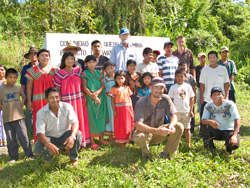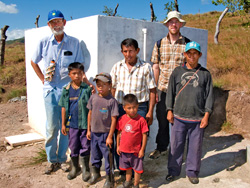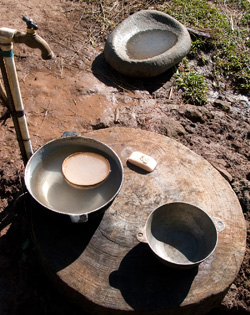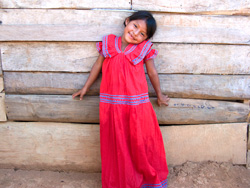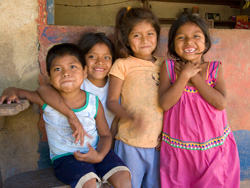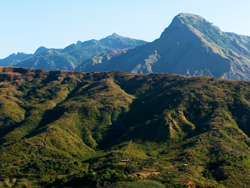How Waterlines works in...Panama
When I was at Christ in the Desert Monastery in 1990, having already worked on a Waterlines project at Los Rico, Mexico, Ed Crocker and Steve Peart invited me to Panama. We were a group of about eight, all from New Mexico. Our project was in Cerro Viejo, Chiriqui, about ten miles from the Pan American Highway, although it seemed like a 100 in the VW van with all of our equipment.
We ended up abandoning the car and walking the last two miles, meeting the community-development organizer, Marcial Mendoza, on the road.
The adventure had just begun as our crew helped construct a water system powered by a solar pump. For all of us the experience of living very close to the people was overwhelming. The people were extremely poor even by Mexican standards, living in thatch-roofed houses with dirt floors and no doors (no need to bother with keys), a lot of malnutrition, and generally unhealthy.
To me it was amazing that even the small children were bilingual—Spanish and Ñobe. Of course we had a great time with the people, especially with the children after work.
Since I was the translator and community contact, I had the at-times delicate task of mediating between groups. It became very clear that although they were very powerless, they were still very proud and insisted on making the important decisions about their system. We became great friends after sweating together all day and had a wonderful dedication celebration and a tearful departing. Our team went our own separate ways with a lot of sunburn, chigger bites, photos, and lasting memories. For several of us it was just the beginning.
As the number of communities increased, we began to work with local Panamanian technicians, particularly Nicholas Arcia, to collaborate with us and the communities. The Sisters in Llano Ñopo, Panama, who have run the clinic and school in Llano Ñopo for 40 years, have been an invaluable asset for many projects in their area, especially with follow-up and training.
Little by little we drew up guidelines for the communities to submit requests, to organize their communities, and to maintain their systems.
Here Steve was a big help from his experience in New Mexico.
Every year in January, Waterlines volunteers (including those from Souder Miller Engineering) continue to visit as many of the villages as possible, which is a radically new experience for the people who had been used to being abandoned by the government or non-profit organizations who help but then do not return. For Waterlines that has meant helping certain communities with additional funding for project repairs and expansions.
A truly enriching experience for all of us has been our relationship with the Peace Corps. Beginning with a very simple rain-collection system in 2002, we have now worked on 36 gravity-flow projects with them. For several years we spent half of our time with the Peace Corps’ Water and Sanitation Director Greg Branch, and now with Tim Wellman and with many Peace Corps volunteers in many of the provinces of Panama. For us it has been a wonderful opportunity to work with highly committed and well-trained volunteers who live in the communities and really know their situations.
There are so many projects in Panama, each with their own peculiar needs, that it is becoming more and more difficult to fulfill one of Waterlines’ major objectives, which is to stay in contact yearly with the communities either through Peace Corps volunteers, the churches, Nicolas, Marcial, or others. We will continue to visit as many communities as possible every year to evaluate the condition of the water systems.


